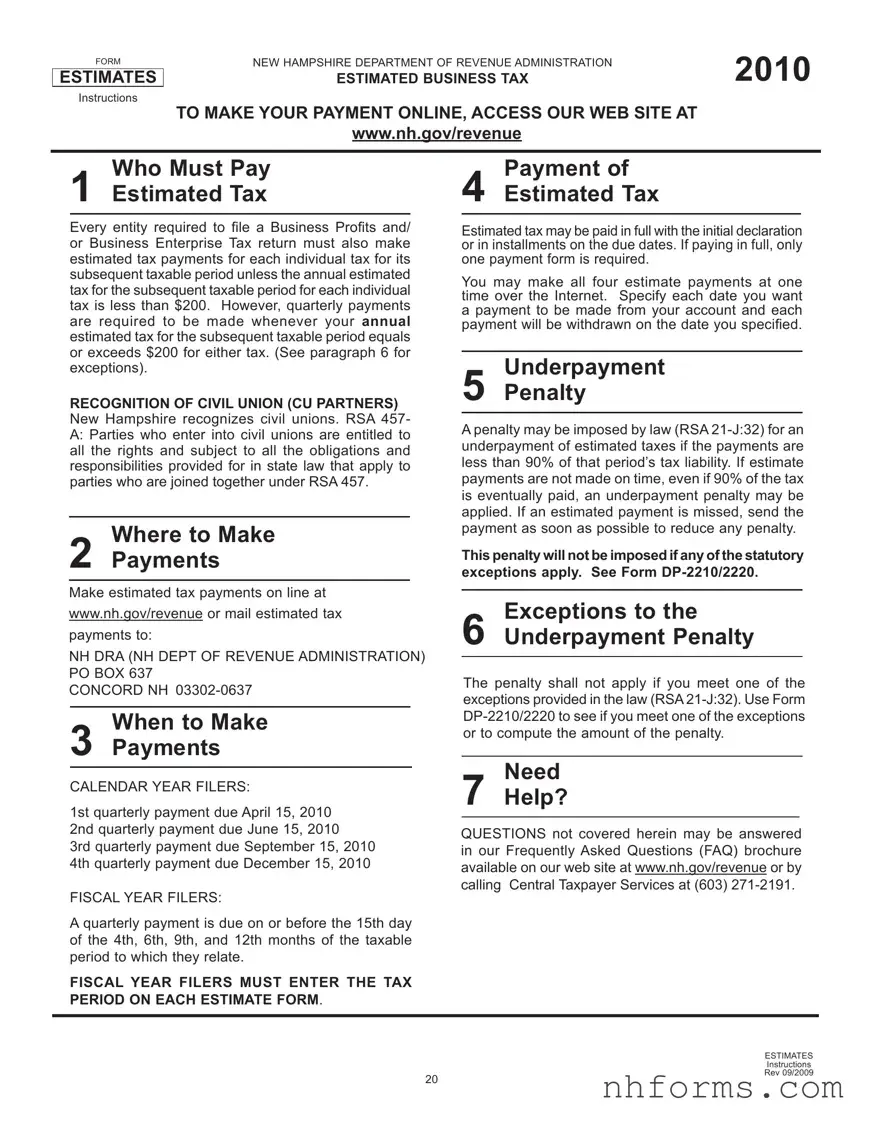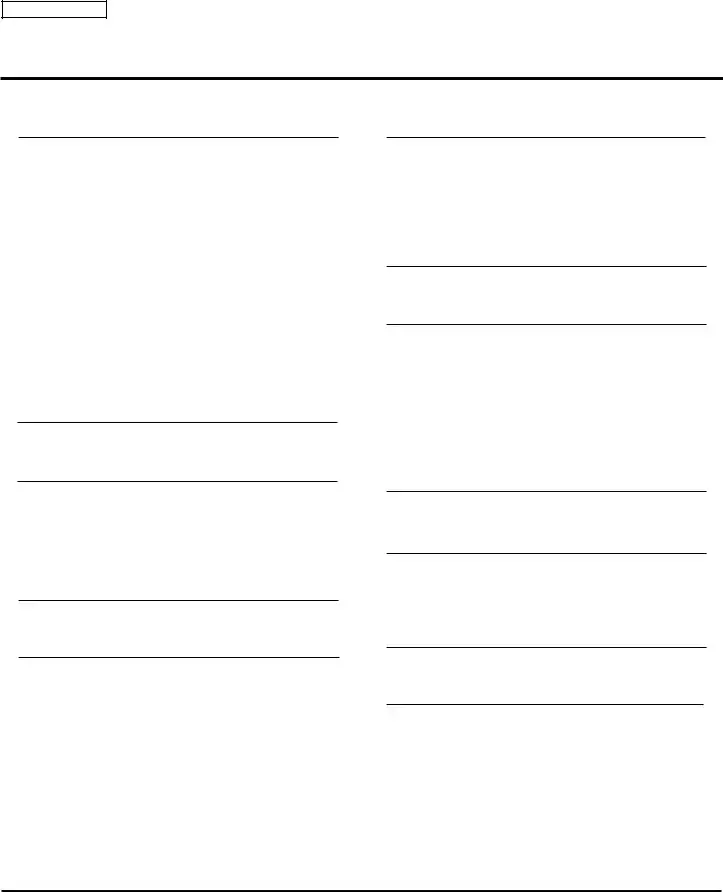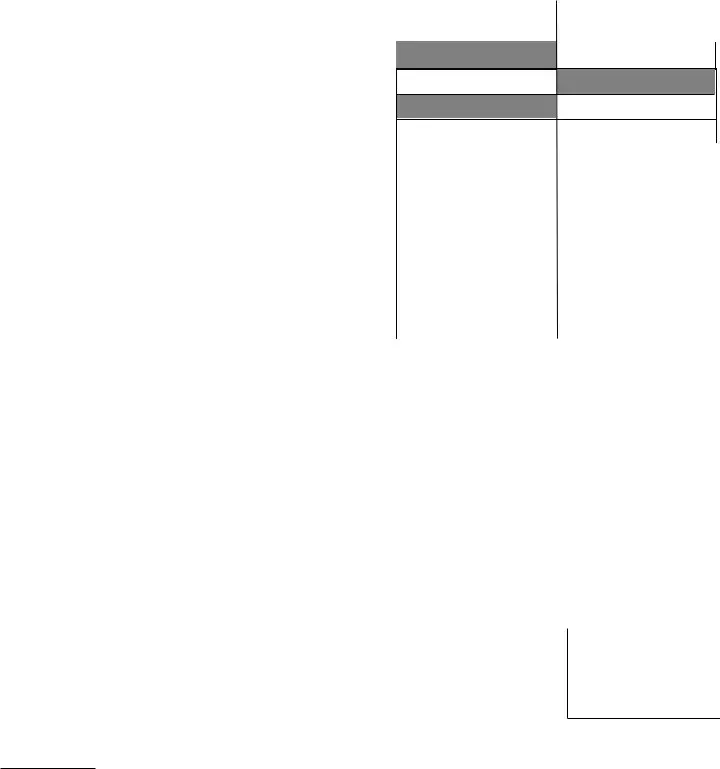Who needs to make estimated tax payments using the NH-1065-ES form?
Entities required to file a Business Profits and/or Business Enterprise Tax return in New Hampshire must make estimated tax payments if their annual estimated tax is $200 or more for each tax. This includes both parts of the tax, requiring quarterly payments if the threshold is met.
Can payments be made online for the NH-1065-ES form?
Yes, payments can be made online. To make a payment, visit the New Hampshire Department of Revenue Administration website at www.nh.gov/revenue. You can make the full payment or installment payments directly through their site.
Is there an underpayment penalty for the NH-1065-ES?
If your payments are less than 90% of the tax liability for that period, or if payments are made late, you could face an underpayment penalty. However, if you eventually pay 90% of the tax liability or meet any statutory exceptions, the penalty may not apply.
When are estimated payments due for calendar year filers?
For those who follow a calendar year, the due dates are April 15, June 15, September 15, and December 15.
What if my annual estimated tax is less than $200?
If your annual estimated tax for each tax is less than $200, you are not required to make estimated tax payments for that year.
How can I calculate my estimated tax?
The NH-1065-ES provides a calculation worksheet where you can calculate your Business Enterprise Tax (BET) and Business Profits Tax (BPT) based on your taxable base and profits after apportionment. Use the provided rates to calculate your estimated tax.
What should I do if I missed an estimated tax payment?
If you miss a payment, submit it as soon as possible to minimize any penalties. The sooner you make the missed payment, the lesser the potential penalty might be.
Where can I find help if I have more questions?
If the information provided here doesn't cover your questions, you can visit the New Hampshire Department of Revenue Administration's website at www.nh.gov/revenue or call Central Taxpayer Services at (603) 271-2191 for assistance.


